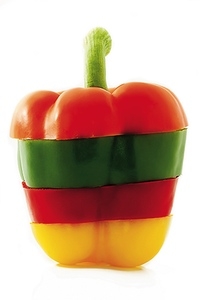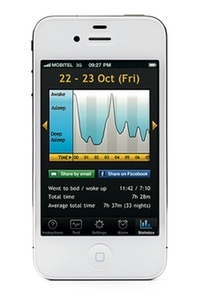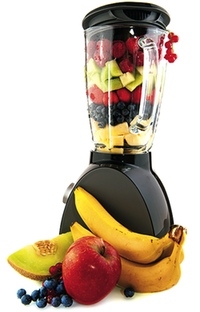
1. Feed Your Face
One way to look younger: vegetables for breakfast, says Dr. Valori Treloar, coauthor of The Clear Skin Diet. Though fruit is healthy, it’s full of sugar, which ages you, she says. When the body breaks down sugar, the end products disrupt collagen’s ability to pack itself tight. “Your skin gets less smooth and resilient,” she says.
Treloar suggests brightly colored vegetables such as tomatoes, peppers, squash, or zucchini. Her favorite way to get them in is to smear caramelized veggies (roast at 450 degrees for 20 to 45 minutes with olive oil, salt, and pepper) on whole-grain toast or to add them to eggs.
Partied the night before? Add in broccoli, cauliflower, bok choy, or radishes–to turn on enzymes that help with detoxing.
2. Does A Body Good
Low-fat dairy products may be a key to losing belly fat, says a study in the September Journal of Nutrition.
Three groups of women were put on the same exercise plan but three different calorie-restricted diets: one high protein, high dairy (30 percent protein, with 50 percent of that from dairy); one medium protein, medium dairy (15 percent protein, 8 percent of that dairy); and a 15-percent protein, no-dairy diet.
The groups lost the same amount of weight, but all the weight lost in the high-dairy group was fat, says Andrea Josse, the study’s lead author. “And participants gained muscle mass,” Josse says.
Good low-fat, high-protein foods: Greek yogurt or Icelandic Skyr yogurt.
3. Going With The Grain
One cup of cooked amaranth, an ancient grain grown in Central America, has nearly as much calcium as a cup of low-fat cottage cheese, along with five grams of fiber and more protein than a hard-boiled egg. And unlike most other grains, the nutty-flavored carb is high in lysine, an amino acid that the body needs for growth and tissue repair. It’s also gluten-free.
You could serve it as you would a side of rice, or pop it like popcorn, suggests vegetarian chef Emily Malone, who blogs at the Daily Garnish. Put the amaranth in a dry pan over medium to high heat, then cover with a lid, and it will start popping in about 30 seconds. It will turn into little puff balls you can mix with dried fruit or nuts and eat like cereal–or for a snack.

4. A Better Night’s Sleep
If you’re going to sleep with your phone–some of us do–at least let it help you from being dead on your feet the next day.
The Sleep Cycle iPhone app (99 cents) monitors your z’s and wakes you when you’re dozing lightly, as opposed to when you’re in mid-REM cycle. How? You set your alarm, place the phone somewhere on the bed–under the sheet corner is a good spot–and the app uses your phone’s accelerometer to monitor your night moves. About 30 minutes before your alarm, the app watches for the lightest portions of your sleep cycle and gently wakes you with your choice of sound. Worried about accidentally dialing someone in the middle of the night? Put your phone in airplane mode.
5. Sniff Away Weight
It makes sense that the aroma of green apple, banana, and peppermint would whet your appetite. Surprisingly, they can help you lose weight–a lot of it. According to a study by the Smell and Taste Treatment and Research Foundation, people who smelled any of these scents several times daily lost an average of 30 pounds in six months.
Burberry Classic fragrance incorporates green apple; Giorgio Armani and Thierry Mugler both make peppermint-laced men’s colognes; and Harvey Prince bottles hints of green apple and peppermint into its Eau de Lite perfume ($26). Or, at scentdesign.net, you can create your own. Browse the recipes, or choose up to five “flavors” from a list of more than 50. Cost: $25 an ounce.
6. Make Time For Tea
Research published in the journal Nutrition in March found that black tea stopped the pounds from adding on when given to mice on a high-fat diet. Hiroaki Yajima, one of the authors, speculates that tea compounds “inhibit intestinal lipid absorption”–meaning they stop fat from accumulating. For best results, you need to drink it black–milk proteins neutralize the fat-fighting. Sugar and lemon are okay.
Prefer green tea? In a study in the June Journal of Nutrition, volunteers who drank green tea for 12 weeks showed 25 percent less skin redness after sun exposure. The tea’s catechins combat free radicals, protecting skin against ultraviolet radiation and improving skin quality. Tea also improved skin elasticity and hydration.

7. Switch To Smarter Snacking
The cure for mindless eating is literally all in your hands, says a study published in the November Personality and Social Psychology Bulletin.
If you grab potato chips or candy with your non-dominant hand, you’ll consume less. Why? Scientists don’t have a definite answer, although the hypothesis is that because doing anything with your non-dominant hand takes more effort, you become more conscious of whatever activity you’re doing–meaning that mindless snacking becomes mindful and you’ll eat less.
8. A Bad Rap For Potatoes?
Don’t fear the white potato. It has more potassium than a banana and 54 percent of the daily recommended amount of vitamin B6. The spud becomes a nutritional dud only when smothered in butter, sour cream, or cheese.
Yes, a recent New England Journal of Medicine study fingered potatoes as the worst culprits in weight gain–a daily serving added an average of 1.3 pounds a year. But dietitian Cynthia Sass says the study wasn’t a controlled clinical trial: “There are a lot of unknowns.”
If you’re watching weight, Sass suggests not eating spuds daily. Or eat potatoes that are cooked and then cooled–as in potato salad. The resistant starch boosts the body’s fat-burning.
9. Recipe For Good Health
The free Green Smoothie Recipe app (greensmoothiesblog.com) was designed to help people create custom juices and smoothies. But the information, which works with all mobile devices and on the Web, is helpful for anyone creating recipes, even if it’s just throwing together a stir-fry.
The app uses trusted sources to give you nutritional data for vegetables, fruits, and more, highlighting which foods are helpful for which health conditions–for example, that lemons are helpful in fighting cold, flu, and recurrent ear infections.
10. Stretch Yourself Calm
A 2011 study led by Brittanie DeChino, a George Washington University professor of exercise science, compared practitioners of yoga to those who regularly did other exercise. All had a similarly low prevalence of anxiety and depression symptoms, but the yogis had less stress, aches, and headaches–and higher scores for alertness.
Even a quick break to hold a pose can reduce stress, says DeChino. Georgetown Cupcake’s Katherine Kallinis and Sophie LaMontagne call this “flash yoga.” Says LaMontagne: “We do it when we’re exhausted in the middle of frosting trays of cupcakes. It does wonders.” Their favorite poses: Warrior I and II, standing poses that don’t need a mat. For an index of poses, see yogajournal.com.
This article appears in the December 2011 issue of The Washingtonian.

















